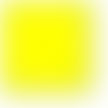SVG blur effect
Note: Internet Explorer and Safari do not support SVG filters!
<defs> and <filter>
All Internet SVG filters are defined in the <defs> element. The <defs> element definition is short and contains definitions for special elements (such as filters).
<filter> tag is used to define SVG filters. The <filter> tag uses the required id attribute to define which filter to apply to the graph?
SVG <feGaussianBlur>
Example 1
<feGaussianBlur> element is used to create a blur effect:

Below Is the SVG code:
Instance
<!DOCTYPE html> <html> <body> <p><b>Note: </b>Internet Explorer and Safari do not support SVG filters yet!</p> <svg xmlns="http://www.w3.org/2000/svg" version="1.1"> <defs> <filter id="f1" x="0" y="0"> <feGaussianBlur in="SourceGraphic" stdDeviation="15" /> </filter> </defs> <rect width="90" height="90" stroke="green" stroke-width="3" fill="yellow" filter="url(#f1)" /> </svg> </body> </html>
Run Instance»
Click the "Run Instance" button to view the online instance
For Opera users: View the SVG file (right-click on the SVG graphic preview source).
Code analysis:
- ##<filter>The element id attribute defines the unique name of a filter
- <feGaussianBlur>Element defines the blur effect
- in="SourceGraphic"This section defines the effect created from the entire image
- stdDeviation Attribute defines the blur amount
- <rect>The filter attribute of the element is used to link the element to the "f1" filter








